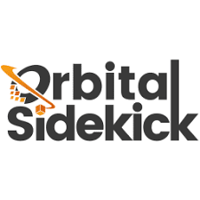What You'll Do:
- Identify and solve real problems: Collaborate with scientists to understand needs, then design and build the infrastructure to address them
- Build production ML systems: Develop robust pipelines using orchestrators (Prefect, Airflow, Dagster) that move models from research to production
- Create internal tools: Build developer-friendly tools that accelerate team productivity and model development workflows
- Own the ML infrastructure: Design and maintain model repositories, experiment tracking, monitoring, and deployment systems
- Bridge theory and practice: Apply ML theory to solve practical problems while building scalable, production-ready solutions
- Optimize for impact: Focus on cloud resource optimization, model performance, and system reliability that directly supports product goals
- Drive continuous improvement: Establish CI/CD, automated testing, and monitoring systems that ensure robust, reliable deployments
What You'll Bring:
- 3+ years of experience as an applied ML engineer or research engineer
- BS, MS, or PhD in Computer Science, Engineering, Physics, Mathematics, or related field
- Theory meets practice: Strong foundation in ML theory combined with hands-on experience building production systems
- Full-stack mindset: Comfortable developing internal tools, APIs, and user interfaces that solve real problems
- Pipeline expertise: Proven experience architecting and maintaining complex workflows in orchestration frameworks
- Ownership mentality: Track record of identifying needs, proposing solutions, and driving projects to completion
- Production experience: Hands-on experience deploying, monitoring, and maintaining ML models in cloud environments (AWS)
- Python, PyTorch, Weights & Biases, MLFlow, DVC, Ray, Dask
- Experience with workflow orchestrators (Prefect, Airflow, Dagster)
- Cloud platforms (AWS) and containerization (Docker, Kubernetes)
- Software engineering best practices (testing, CI/CD, version control)
Nice-to-Haves:
- Experience building internal tools that other engineers love to use
- Background in geospatial analytics, remote sensing, or hyperspectral data
- Open source contributions or side projects that demonstrate building instincts
- History of taking research prototypes to production scale
- Passion for environmental applications and real-world impact
Why Join OSK?
- Pioneering Technology: Be part of a company at the cutting edge of hyperspectral technology, making a real impact on industries and global challenges.
- Growth Opportunity: Join a rapidly expanding team with ample opportunities for professional development and career advancement within the sales organization.
- Impactful Work: Contribute to solutions that address critical issues in sustainability, security, and resource management.
- Collaborative Culture: Work alongside a passionate and innovative team of engineers, data scientists, and industry experts.
Top Skills

What We Do
Orbital Sidekick’s vision is to lead the Energy Transition by building the most robust remote sensing and analytics capability in existence. OSK’s proprietary analytics platform and hyperspectral payload architecture provide persistent space-based monitoring solutions powered by Spectral Intelligence. This unique radiometric speciation and change detection capability enables unparalleled target monitoring services for both commercial and defense users on a global scale.
OSK recently launched the most advanced commercial hyperspectral satellite in existence: Aurora. Aurora serves OSK’s customers in the energy, mining, and defense sectors, including expanding contracts and pilot program opportunities for oil and gas pipeline monitoring & methane mapping, clean energy resource exploration, sustainable mining practices, and wildfire risk mitigation.
OSK is currently building its GHOSt hyperspectral satellite constellation for deployment in 2022, providing daily target monitoring services to end-users.










